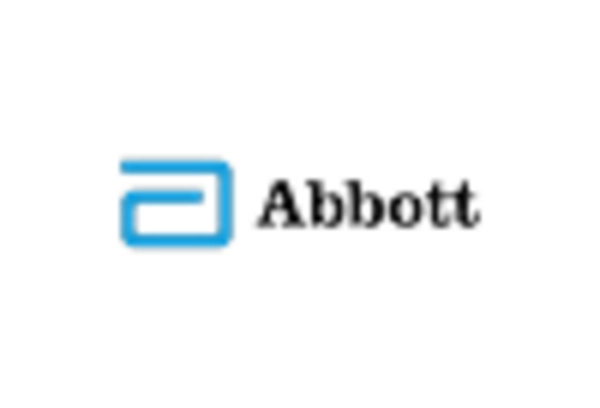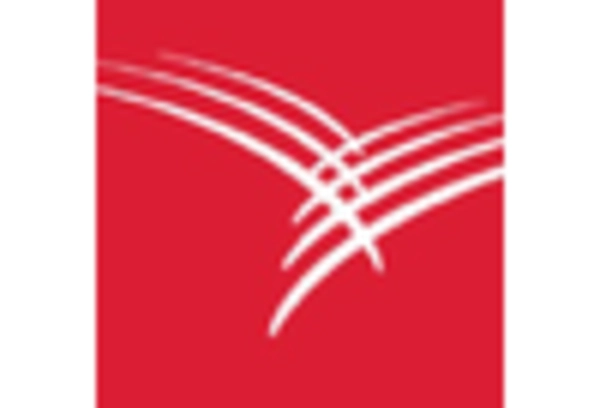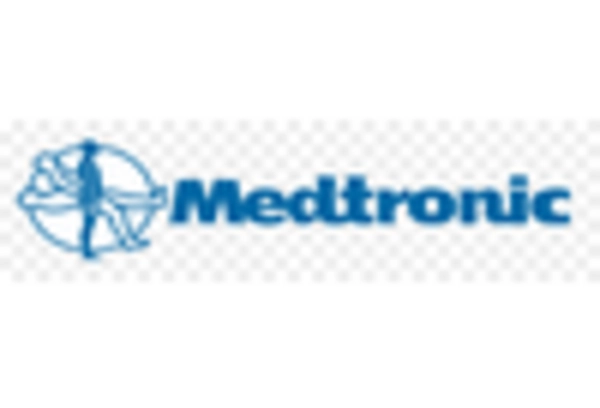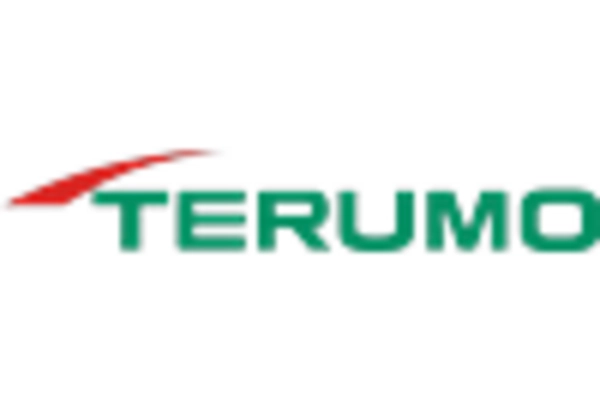Growing Aging Population
The demographic shift towards an aging population in the GCC is likely to bolster the embolic protection-devices market. As individuals age, the incidence of cardiovascular diseases tends to rise, necessitating advanced medical interventions. By 2025, it is estimated that the population aged 65 and above in the GCC will increase significantly, leading to a higher demand for procedures that utilize embolic protection devices. This demographic trend suggests a sustained need for innovative solutions to mitigate risks during surgeries. Consequently, healthcare providers are expected to invest in these devices to enhance patient safety and improve surgical outcomes, thereby driving market growth.
Increasing Healthcare Expenditure
The rising healthcare expenditure in the GCC region is a pivotal driver for the embolic protection-devices market. Governments and private sectors are investing significantly in healthcare infrastructure, which includes advanced medical technologies. For instance, healthcare spending in the GCC is projected to reach approximately $104 billion by 2025. This increase in funding facilitates the adoption of innovative embolic protection devices, enhancing patient outcomes during cardiovascular procedures. Furthermore, as healthcare budgets expand, hospitals are more likely to procure advanced devices, thereby stimulating market growth. The emphasis on improving healthcare quality and accessibility in the region further supports the demand for these devices, indicating a robust market trajectory.
Supportive Regulatory Environment
A supportive regulatory environment in the GCC is fostering growth in the embolic protection-devices market. Regulatory bodies are increasingly streamlining the approval processes for medical devices, which encourages innovation and market entry. This regulatory support is crucial for manufacturers looking to introduce new products, as it reduces time-to-market and associated costs. Furthermore, the establishment of clear guidelines for device safety and efficacy enhances consumer confidence, potentially leading to increased adoption rates. As the regulatory landscape continues to evolve favorably, it is likely to stimulate competition and drive advancements in the embolic protection-devices market.
Rising Awareness of Preventive Healthcare
There is a notable increase in awareness regarding preventive healthcare measures among the GCC population, which is influencing the embolic protection-devices market. Educational campaigns and health initiatives are encouraging individuals to seek early diagnosis and treatment for cardiovascular conditions. This heightened awareness is likely to lead to an increase in elective procedures where embolic protection devices are utilized. As patients become more informed about the risks associated with cardiovascular diseases, the demand for protective devices during surgeries is expected to rise. This trend indicates a shift towards proactive healthcare, which could significantly impact market dynamics.
Technological Innovations in Medical Devices
Technological innovations are transforming the landscape of the embolic protection-devices market. The introduction of advanced materials and designs enhances the efficacy and safety of these devices. For example, the development of bioresorbable materials and improved delivery systems is likely to increase the adoption of embolic protection devices in various procedures. The market is witnessing a surge in research and development activities aimed at creating more effective solutions for preventing embolic events. As hospitals and clinics in the GCC adopt these cutting-edge technologies, the market is expected to experience substantial growth, driven by the demand for improved patient outcomes.

















Leave a Comment